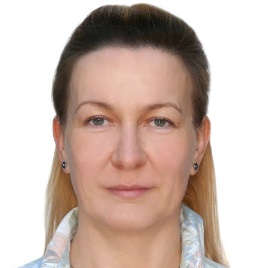Fixation, Transport and Storage of Carbon by Forest Ecosystems
A special issue of Forests (ISSN 1999-4907). This special issue belongs to the section "Forest Ecophysiology and Biology".
Deadline for manuscript submissions: closed (10 April 2024) | Viewed by 2189
Special Issue Editors
Interests: soil respiration; ecosystems; ecology; carbon sequestration; greenhouse gases; biogeochemistry; biogeochemical cycling; soil ecology; environment; litter; decomposition; soil; biology; CO2; 13C isotope labeling; carbon cycle; climate change; forest soils; soil organic matter; organic matter decomposition; photosynthesis; conifer
Interests: forest soils; soil carbon; climate change
Special Issues, Collections and Topics in MDPI journals
Interests: carbon cycle; biogeochemistry; microbial diversity; methane; microbiology; biodiversity and conservation; nanobiotechnology; soil respiration; soil science; microbial ecology; environmental impact assessment; environmental microbiology; climate change; soil chromatography; soil carbon
Special Issue Information
Dear Colleagues,
The fate of carbon (C) in conifer ecosystems via its fixation, transport, allocation, stabilization, and storage receives much attention globally due to climate change feedback. The insights into these specific processes concerning environmental factors’ seasonal and annual dynamics can help to understand the complex response of conifer ecosystems and their components (soil, biota, and vegetation) to the projected successional changes resulting from climate fluctuations. Among the understudied problems, one is associated with tree phenology, which influences the C allocation and transportation within conifer trees (evergreen and deciduous both). The deviations of environmental factors could affect the interrelationship between phenology and C transport processes. Another crucial problem is soil C stabilization in conifer ecosystems and its dependence on the soil biological activity and inputs of root exudates. The papers in this Special Issue will provide valuable knowledge that can be implemented in forest management services to control the processes of C transport and maintain long-term sustainability and biodiversity within the conifer ecosystems. This Special Issue will collect papers on C fixation, transport, and storage in conifer ecosystems. Research articles may focus on topics related to the studies of C cycling and stabilization in different compartments of conifer ecosystems—from the soil to trees to landscapes—assessed via various methods.
Dr. Oxana V. Masyagina
Prof. Dr. Oleg V. Menyailo
Dr. Svetlana Evgrafova
Guest Editors
Manuscript Submission Information
Manuscripts should be submitted online at www.mdpi.com by registering and logging in to this website. Once you are registered, click here to go to the submission form. Manuscripts can be submitted until the deadline. All submissions that pass pre-check are peer-reviewed. Accepted papers will be published continuously in the journal (as soon as accepted) and will be listed together on the special issue website. Research articles, review articles as well as short communications are invited. For planned papers, a title and short abstract (about 100 words) can be sent to the Editorial Office for announcement on this website.
Submitted manuscripts should not have been published previously, nor be under consideration for publication elsewhere (except conference proceedings papers). All manuscripts are thoroughly refereed through a single-blind peer-review process. A guide for authors and other relevant information for submission of manuscripts is available on the Instructions for Authors page. Forests is an international peer-reviewed open access monthly journal published by MDPI.
Please visit the Instructions for Authors page before submitting a manuscript. The Article Processing Charge (APC) for publication in this open access journal is 2600 CHF (Swiss Francs). Submitted papers should be well formatted and use good English. Authors may use MDPI's English editing service prior to publication or during author revisions.
Keywords
- ecosystem
- conifer
- photosynthesis
- carbon allocation
- carbon transport
- carbon storage
- CO2
- CH4
- soil biota
- stabile isotopes







